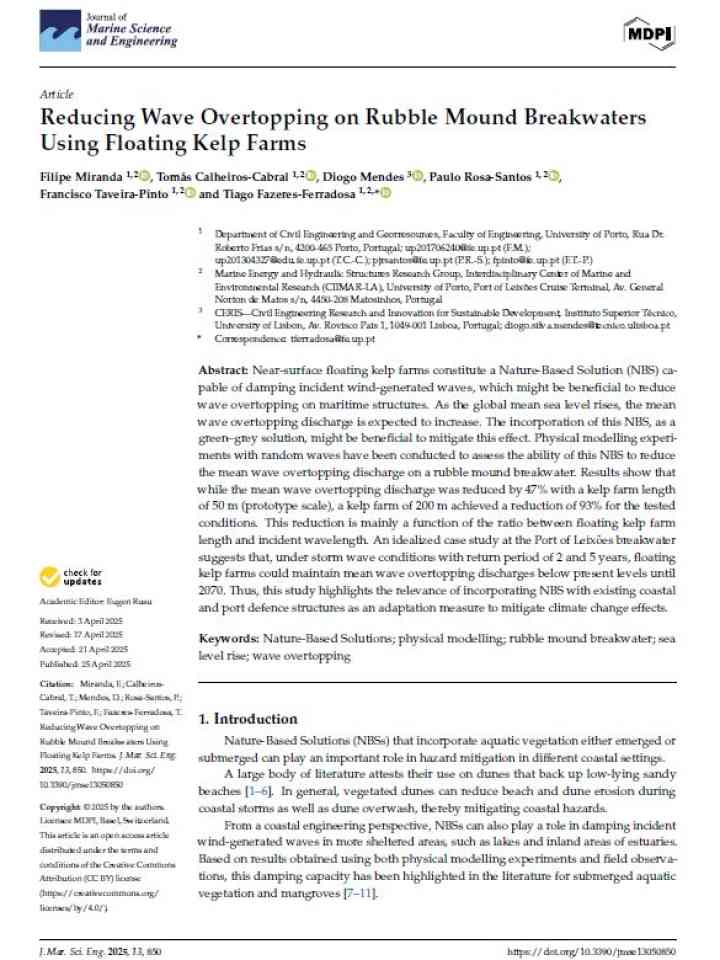Reducing wave overtopping on rubble mound breakwaters using floating kelp farms
In this paper, physical modelling experiments with random waves have been conducted to assess the ability of this Nature-based Solution (NBS) to reduce the mean wave overtopping discharge on a rubble mound breakwater. Results show that while the mean wave overtopping discharge was reduced by 47% with a kelp farm length of 50 m (prototype scale), a kelp farm of 200 m achieved a reduction of 93% for the tested conditions.
This reduction is mainly a function of the ratio between floating kelp farm length and incident wavelength. An idealized case study at the Port of Leixões breakwater suggests that, under storm wave conditions with return period of 2 and 5 years, floating kelp farms could maintain mean wave overtopping discharges below present levels until 2070. Thus, this study highlights the relevance of incorporating NBS with existing coastal and port defence structures as an adaptation measure to mitigate climate change effects.
Explore further
